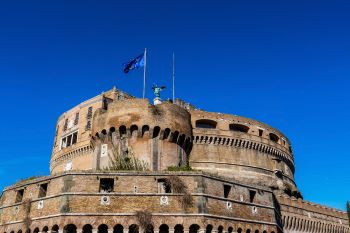



Once built as an imperial mausoleum for the Roman Emperor Hadrian and his descendants, Castel Sant’Angelo served for a time as part of the city walls, was then used as a fortress by several popes for a very long time and was later converted into a dungeon and refuge. As a refuge, it was located outside the Vatican area, but was connected to the Vatican by a tunnel from 1722. Today, Castel Sant’Angelo is a national museum with six floors and 58 rooms.

Clickhere
to see on google maps
Address:
Lungotevere Castello 50
00193 Rome